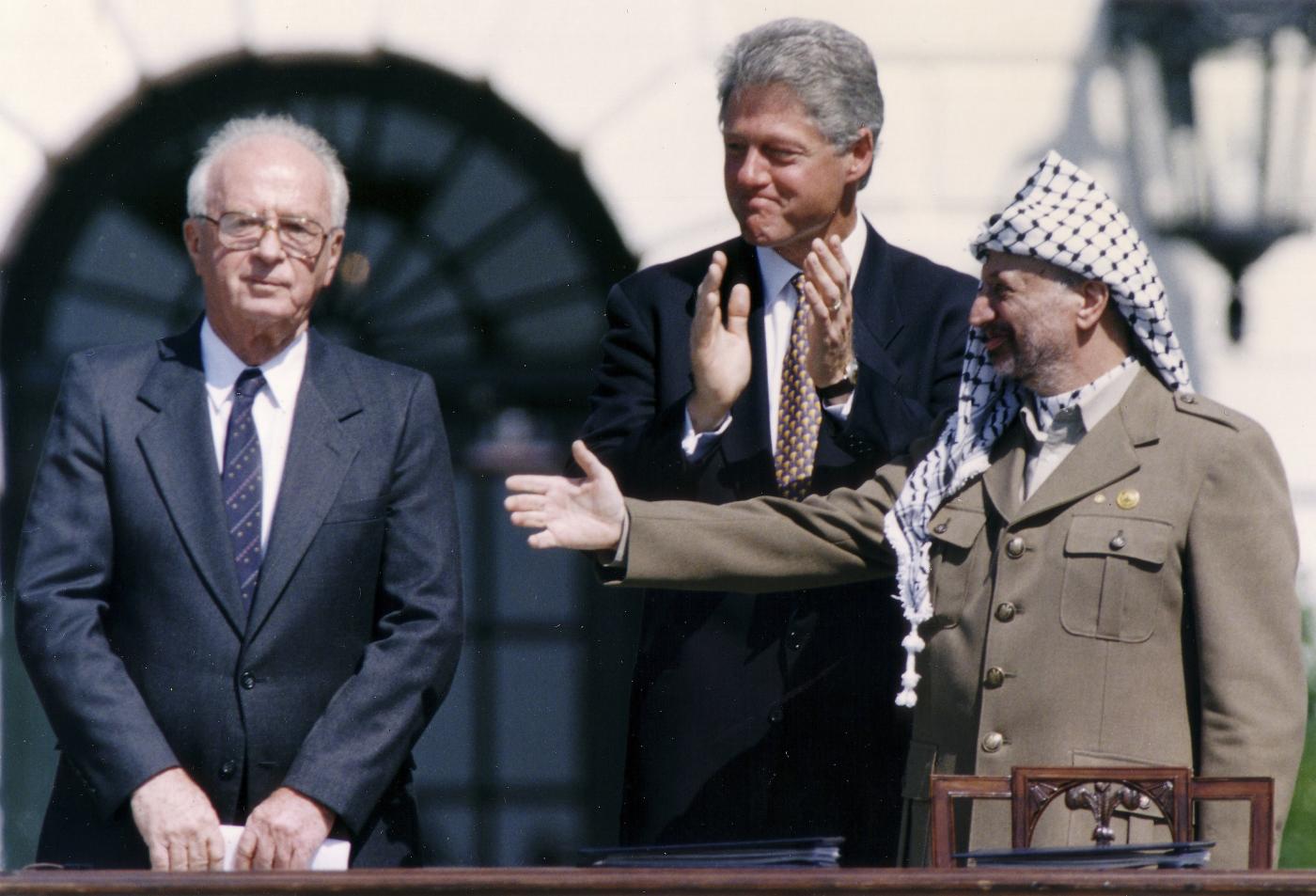This changed in 1957 when the Soviet Union, angered that the United States and England had the region in their sphere of influence, began an effort to gain more traction in the region. The Soviets armed rebels and helped formulate plans to delegitimize the Jewish state. Part of the Soviet objection to Israel was the fact that a growing Jewish nationalist movement was growing in the Communist State which banned religion. They saw Israel as a threat that was fueling their own internal discord.
With financial and logistical help from the Soviets, in 1964 an organization known as the Palestine Liberation Organization (PLO) was created and headquartered in Tunisia. In 1969, a man who created Fatah, a party dedicated to Arab Nationalism in Palestine named Yasser Arafat became its leader, he led them until his death in 2004.
Arafat was not Palestinian. He was born in Cairo, Egypt in 1929 and was a fierce Arab nationalist who believed all of the Middle East belonged to Arab Muslims. In 1948, he fought alongside the Muslim Brotherhood during the Arab offensive to prevent the creation of the State of Israel, as its head. After the Arabs lost the 1948 war, Arafat returned to Cairo and served as president of the General Union of Palestinian Students from 1952 to 1956. This was the first time he had identified as Palestinian and marked the start of the Arab nation of Palestine which had no existed prior to 1948. He created Fatah in 1959 and continued his anti-Israel campaigns until he took the help of the PLO in 1969.
For all intents and purposes, the PLO was a terrorist organization that facilitated and funded plane hijackings, bombings, and waves of terror meant to weaken the resolve of the Jewish people. His campaigns also served to embolden other organizations to do the same but had the opposite effect of strengthening the resolve of the Israeli Jews who were building a modern country and beginning to become an important partner to many countries in agriculture, technology, and mostly, intelligence gathering.
After decades of terror attacks against Jews in Israel and abroad and after intense international pressure, Yasser Arafat and the Palestinians caved and decided to work towards a meaningful peace agreement with Israel. From 1993 until 1996, and with the ultimate objective of building a framework for the creation of an independent Palestinian state, Arafat participated in peace talks led by U.S. President Bill Clinton.
Known as the Oslo Accords, the agreement was a series of articles aimed at achieving a comprehensive peace treaty between Israel and the Palestine Liberation Organization (PLO). It is named after Oslo, Norway, as the first discussions regarding this agreement took place there in secret.
The Oslo process began with the signing of the Declaration of Principles by PLO Chairman Yasser Arafat and Israeli Prime Minister Yitzchak Rabin at the White House lawn on September 13, 1993. This was known as the Oslo I agreement, and it was the very first peace agreement signed by the Israelis and any entity known as 'Palestinians'. In this agreement, Israel recognized the PLO as the legitimate representative body of the Palestinians and the PLO recognized Israel’s right to exist in peace and security. It also stated that there would be a peace process leading to a permanent settlement of the Israeli-Palestinian conflict based on UN Resolutions 242 and 338. These agreements were very controversial in Israel at the time, mostly due to the ongoing terrorist attacks on Israeli citizens by various Palestinian organizations including the PLO which was leading the negotiations on behalf of a fractured Arab population in Palestine.
The second agreement, Oslo II, signed in 1995 in Taba, Egypt, led to the creation of the official Palestinian Authority governing both Gaza and the West Bank. As part of the treaty, Israel and the Palestinians were prohibited from inciting violence or conflict one against the other although this clause was often violated, usually by Arab factions that wanted to undermine not just the talks, but Arafat's claim to be the leader of the Palestinian People.
In November 1995, Prime Minister Rabin was assassinated by Yigal Amir, an Israeli extremist who opposed the Oslo Accords. His murder was followed by a wave of Palestinian suicide bombings and terrorist attacks by the Muslim Brotherhood-aligned Hamas which set back the Oslo Process considerably.
The election of Benjamin Netanyahu as Prime Minister in May 1996 made the continuation of the process even more difficult as he was from the Likud Party which opposed Palestinian statehood on any land Israel had captured during the 1948 and 1967 wars, and specifically opposed the Israeli withdrawal from the post-6-Day-War borders. As a result, Netanyahu did not agree with the nature of the Oslo Accords which made it difficult to come to any agreement. After the many Summits failed and U.S. President Clinton left office, the peace process had been worn down and a new round of violence between the nations began.
In September 2000, the Second Intifada began which lead to the total collapse of the Oslo Process. The period of violence lasted years and ruined any hopes of lasting peace on both sides. Although some provisions of the Oslo Accords remain in effect, such as the Palestinian Authority’s control of parts of the West Bank, many of the terms in the agreement have long been abandoned.


